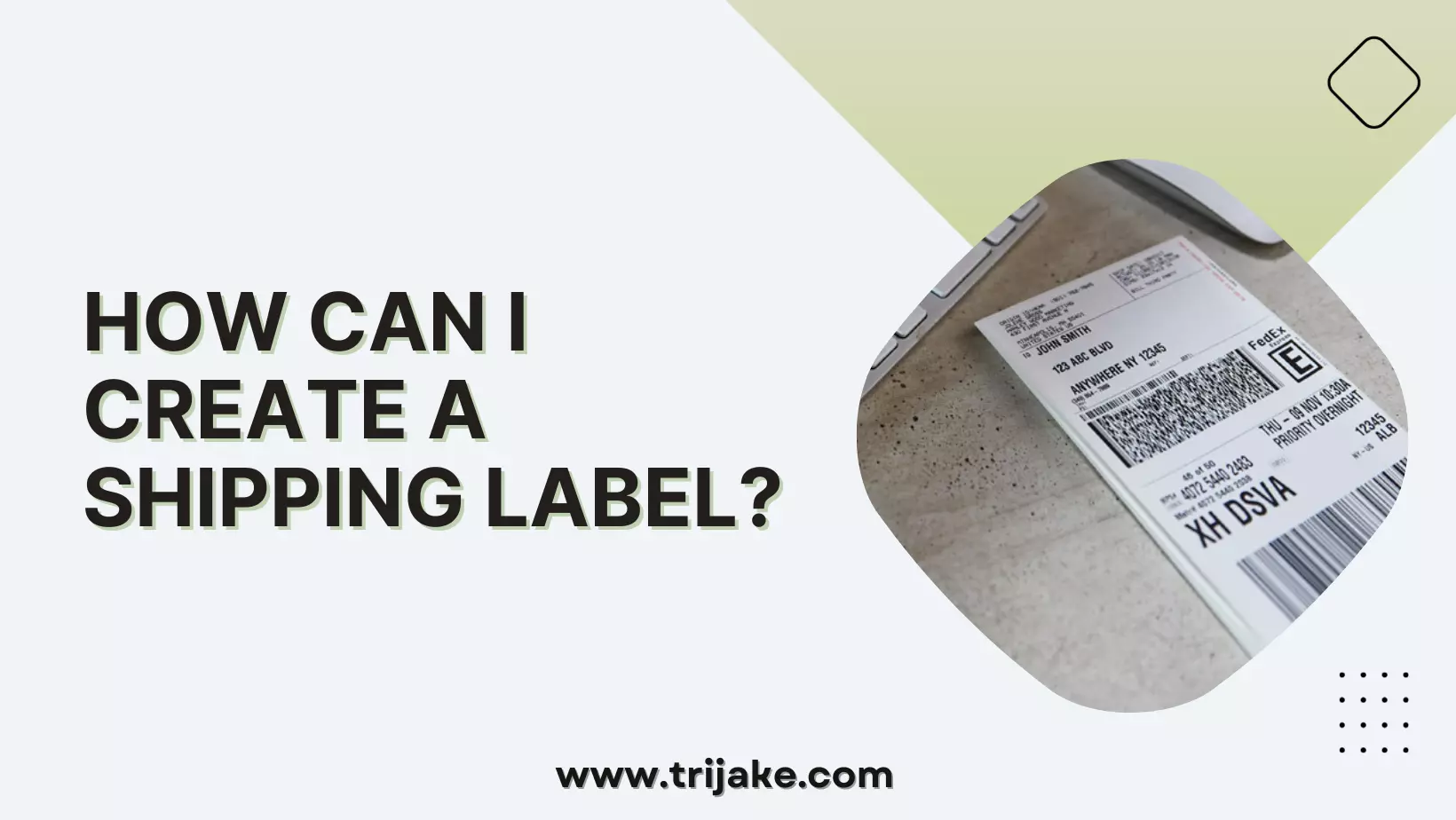How Can I Create a Shipping Label?
The question, how can I create a shipping Label, is crucial when to ask in the shipping business, especially if you are new to it. Here, as you read on, we will show how you can create as well as how shipping labels work.
A shipping label, also known as a package label, serves as a comprehensive identifier for your parcel, containing vital information such as its origin, destination, weight, the carrier’s name, and more.
Both humans and automated systems rely on these labels to determine the package’s source, intended destination, and any intermediate stops it might have made during its journey.
The absence of a well-defined shipping label can result in transit delays, misdelivery to incorrect addresses, or even total loss of the package.
These outcomes could entail financial losses or erode customer trust, underscoring the critical significance of the shipping label.
How Can I Create a Shipping Label?
You have the option to generate a shipping label directly through the carrier or employ software to assist you in the process.
READ ALSO!!!
- What Time Does Usps Stop Delivering on Sunday
- USPS Redelivery Tracking
- When Does UPS Stop Delivering?
- How to Get UPS Tracking Number SF Express
Let’s take a deep look at each of them:
How to Create a Shipping Label With a Carrier
Creating a shipping label can be done in two ways: directly with the carrier or by utilizing specific software. In the United States, numerous carriers offer their unique processes for generating shipping labels.
Let’s delve into the procedures for creating shipping labels with three prominent carriers in the country: FedEx, UPS, and USPS.
1. FedEx
To generate a shipping label with FedEx, you’ll start by inputting essential address details, including names, addresses, phone numbers, and email addresses for notification purposes.
Afterward, you’ll choose your preferred shipping option. Either FedEx One Rate or FedEx Standard Rate. FedEx One Rate doesn’t necessitate an account or package weight, whereas FedEx Standard Rate does.
You’ll then select your packaging type and delivery preferences. Finally, you’ll complete the payment and confirmation process, after which you can print the label and affix it to your package.
2. UPS
Creating a shipping label with UPS begins by entering your return address information, followed by the shipping address details, with particular attention to whether it’s a residential address.
Next, you’ll decide on the packaging method. UPS offers flat-rate shipping for packages up to 50 pounds, or you can manually specify your package’s type, weight, dimensions, and height.
You also have the option to declare a value for your package contents and add features like signature verification or delivery confirmation.
The subsequent steps involve scheduling a pickup or choosing to drop off the package at a UPS Store.
You’ll then select your preferred shipping service
, provide information about your shipment’s contents, input payment details, confirm the information, and finally, print the label.
3. USPS
Creating a shipping label with USPS requires first establishing a USPS account with your email address, username, and password.
Once you’ve created your account, you can easily generate a USPS shipping label using the “Click-N-Ship” feature.
This involves entering both the return and delivery addresses, specifying package details, optional package value, and the shipping date.
You’ll then select the desired shipping service and any additional services for your shipment before adding it to your cart. In the cart, you can review the shipping label information to ensure accuracy.
Finally, you’ll enter your billing information, proceed to make the payment, and then print the label.
How to Create a Shipping Label with Software
Manually executing all these steps with UPS, FedEx, or USPS can be quite a laborious process, particularly when dealing with a substantial volume of shipments.
The good news is that there exists a more efficient approach to swiftly generate a large number of shipping labels, and that’s through the use of software solutions.
These software tools integrate seamlessly with your e-commerce software platform, allowing them to automatically create shipping labels as orders are received.
Some of these tools follow a pay-as-you-go pricing model, where you pay per item processed, while others adopt a monthly fee pricing structure based on a predefined volume of items.
Beyond their automated label generation capabilities, these tools often offer additional benefits, such as access to carrier discounts and valuable reporting features that assist in monitoring and managing your shipments.
READ ALSO!!!
- Amazon Tracking Number Lookup
- Become a Medical Courier Independent Contractor
- How Much Do Instacart Shoppers Make?
- Tendered to Delivery Service Provider
Conclusion
The art of crafting a shipping label holds paramount importance within the shipping realm, particularly for newcomers in this industry.
These labels, acting as vital identifiers for parcels, convey indispensable details regarding the package’s source, destination, weight, and designated carrier.
The creation of shipping labels can be accomplished through direct engagement with the carriers themselves or by harnessing the capabilities of specialized software solutions.
While carrier-specific methods may suit some, software tools offer a more streamlined approach, proving especially advantageous for businesses grappling with a substantial volume of shipments.
